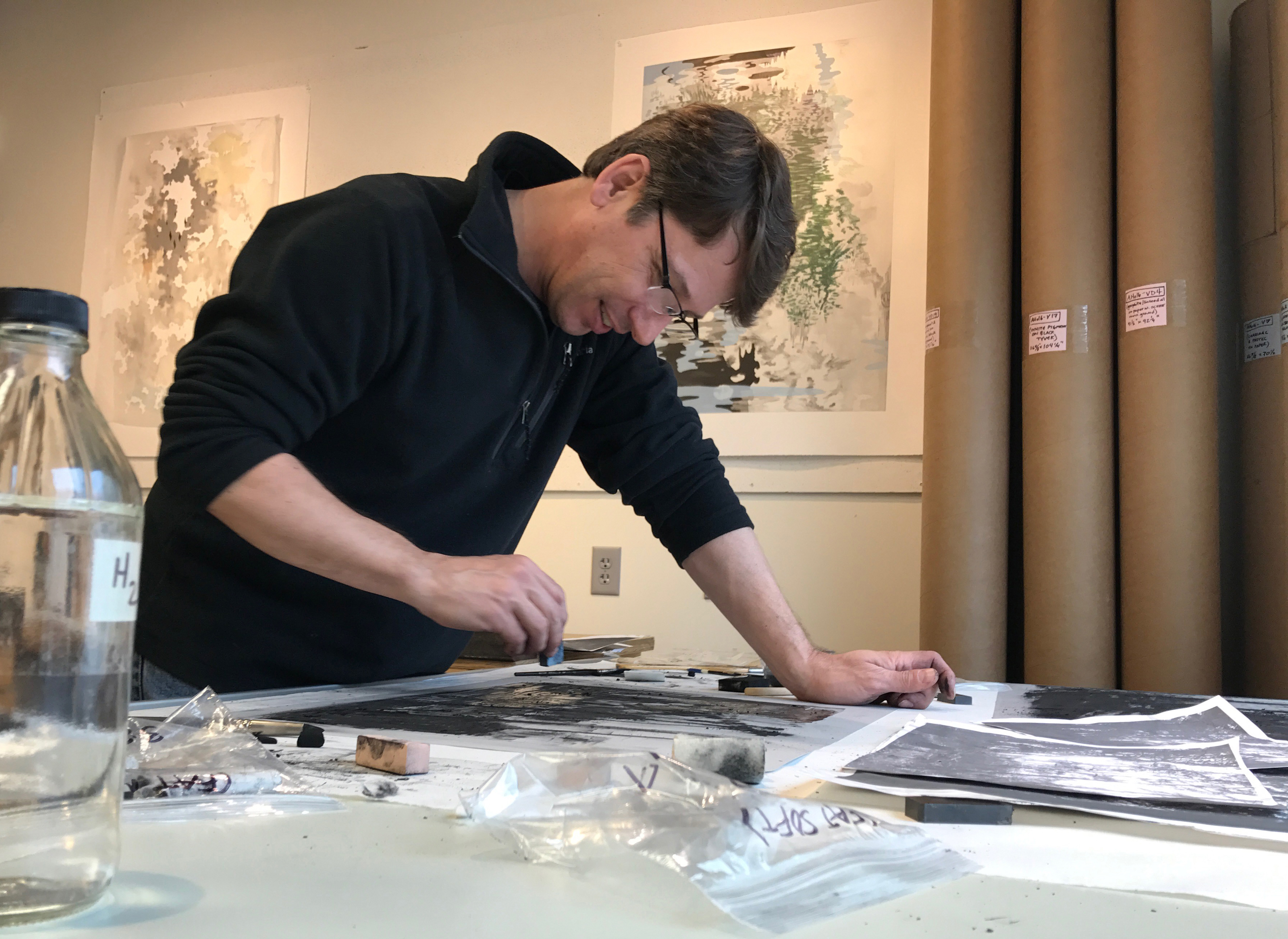
Born 1961, Washington, D.C.
Michael Kareken grew up seeing Mount Rainier from his house in Tacoma, Washington, where his father took a job in the late 1960s as an attorney at Weyerhaeuser Co. The Pacific Northwest landscape was central in Kareken’s life: he sailed Puget Sound, camped on the San Juan Islands, and hiked on the Olympic Peninsula. But before landscape entered his art, Kareken focused on the figure. While at Bowdoin College (BA, 1983) in Brunswick, Maine, he spent a semester in New York studying with the realist painter Robert Birmelin. Kareken then pursued an MFA (1986) at New York’s Brooklyn College, attracted to its strong figurative program. His teachers included the painters Philip Pearlstein, Lois Dodd, Robert Henry, and Lennart Anderson. When Kareken’s future wife, Mary Ahmann, a Minnesota native, moved to Minneapolis for a job teaching film production in 1992, Kareken followed her. In 1996 he joined the faculty at the Minneapolis College of Art and Design, where he is a professor of fine arts.

Initially Kareken depicted his domestic life and tornadoes—for him an unfamiliar weather situation resulting in green skies and sudden trips to the basement. Many of these early images were prints, and he still keeps a Charles Brand press in his Minneapolis studio. Then, in 2005, he looked out the studio window and had a revelation: the giant piles of paper at the Rock-Tenn recycling plant next door looked like mountains. Immediately he was connected emotionally to the topography of his childhood. “Here was a way to make landscapes that didn’t feel like I was going back to the nineteenth century,” he says.1 His “Scrap” series culminated in a 2009 show at the Minneapolis Institute of Art. Its centerpiece was a billboard-size painting of discarded bottles . Then came two series on junked, decaying, and ravaged cars , called “Salvage” and “Parts.” In 2017, as his father’s health declined, Kareken began depicting the actual landscape he had known around Tacoma. The watercolor monotype landscapes produced at Highpoint were black and white, owing in part to his father’s interest in doing black-and-white photography. Like his hero, the artist Edwin Dickinson , Kareken considers himself a tonalist. He views black and white as color reduced to its “essential neutrality.”
Kareken has received a Bush Foundation Fellowship (2010, 2000), McKnight Foundation Fellowship (2009), Arts Midwest/Regional National Endowment for the Arts Fellowship (1996), and six Minnesota State Arts Board grants. In addition to solo exhibitions, notably at Groveland Gallery, Minneapolis, he has participated in “The Beginning of Everything” (2020), Katherine E. Nash Gallery, University of Minnesota, Minneapolis; “Art on the Plains” (2012), Plains Art Museum, Fargo, North Dakota; “Common Sense: Art and the Quotidian” (2010), Weisman Art Museum, Minneapolis; “25th Anniversary Selections Exhibition” (2003), Drawing Center, New York; “Invitational Exhibition” (1997), American Academy of Arts and Letters, New York; and “Drawings Midwest” (1995), Minnesota Museum of American Art, St. Paul.
—Marla J. Kinney
Notes
Michael Kareken, phone conversations with the author, May 2020. ↩︎